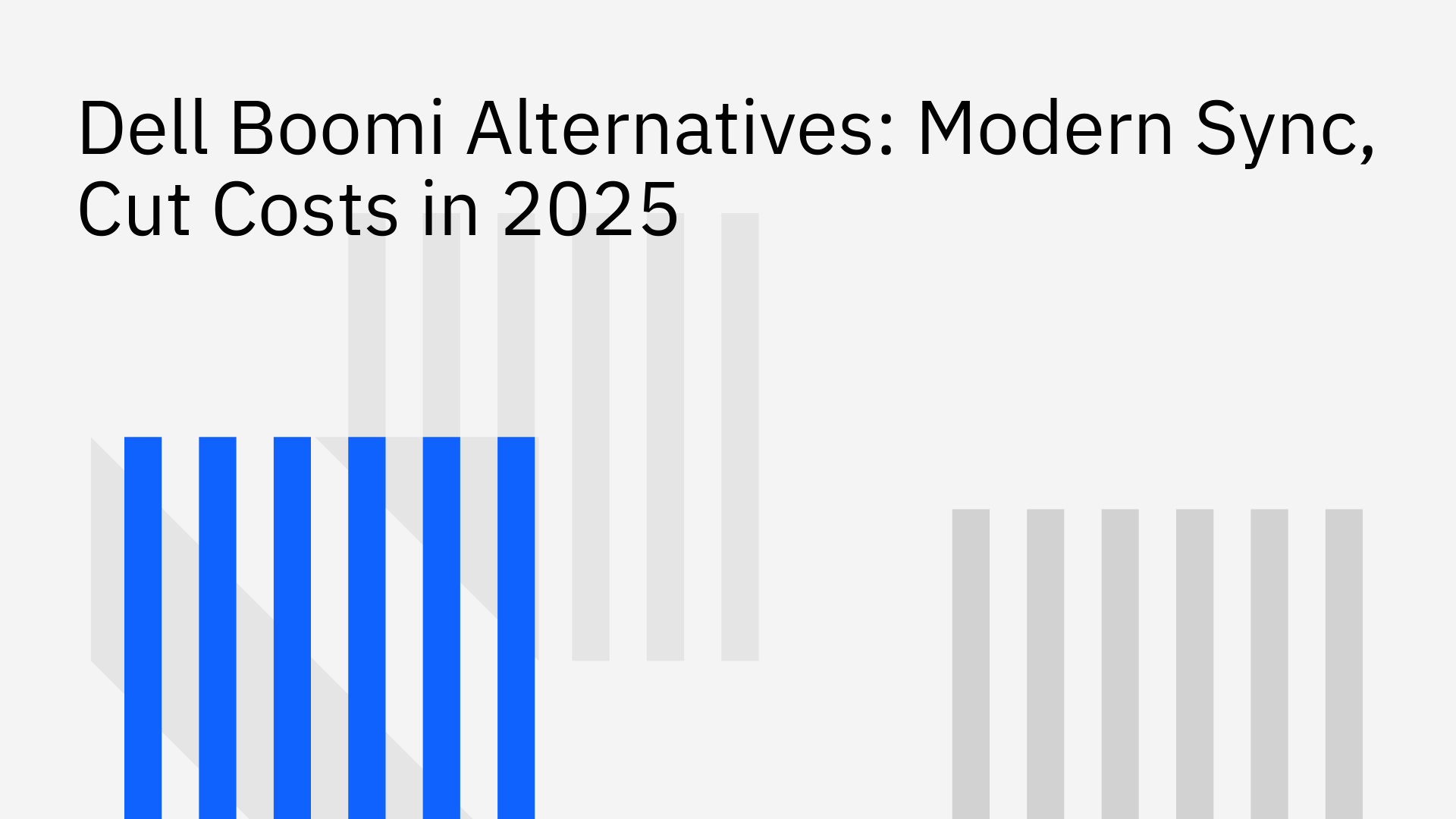
Dell Boomi has long been a well-known name in the Integration Platform as a Service (iPaaS) space, helping businesses connect applications and automate processes for many years.
It served as a foundational tool for many organizations. However, as business operations shift decisively towards real-time data needs, companies are finding that Boomi's architecture can be outdated, complex, and costly.
Its disadvantages, such as a lack of plug-and-play integration options, are becoming more apparent in today's fast-paced environment [4].
This article explores modern Dell Boomi alternatives that provide the superior boomi alternatives for real-time two-way sync capabilities your business needs to thrive in October 2025, all while lowering your total cost of ownership (TCO).
While Boomi was a pioneer, the demands of a modern digital business have evolved. Companies today rely on an average of 130 SaaS applications, and the need for instant data consistency across all of them has become a business necessity, not a luxury [7]. This is where the limitations of traditional platforms like Boomi become clear.
Many legacy iPaaS platforms, including Boomi, are built on batch-processing methods. This is like collecting all your mail for the day and delivering it in one large batch. This process inherently creates delays, or latency, between when a change happens in one system and when it's reflected in another.
For critical operations like syncing a new customer from a CRM to a billing system, this delay is unacceptable. Furthermore, trying to achieve lower latency on these platforms often forces performance trade-offs that introduce risk to mission-critical integrations [2].
Bi-directional (two-way) synchronization is essential for maintaining a single, reliable source of truth across your business applications. When data is updated in one system, it should instantly and accurately update everywhere else. Many platforms claim to offer two-way sync, but they often fake it by running two separate one-way syncs.
This flawed approach is a recipe for disaster, frequently leading to data conflicts, infinite sync loops, and data corruption. When considering Stacksync vs. competitors, the difference between true bi-directional sync and this patchwork method becomes a critical decision factor.
The initial subscription fee for a platform like Boomi is just the tip of the iceberg. The true cost accumulates through:
While Boomi is a powerful tool, customer reviews often highlight limitations that can significantly drive up these long-term costs [5].
Fortunately, the market has evolved. Today, modern platforms are designed to address these specific challenges. The best alternative depends on your primary goal, whether it's perfect operational data sync, simple workflow automation, or complex API management.
Stacksync is a modern platform purpose-built to solve the core challenge of real-time, bi-directional data synchronization at scale. It's the ideal solution for businesses where data delays and inconsistencies are not an option.
Key differentiators include:
MuleSoft is an enterprise-grade platform ideal for large organizations looking to build an "application network" through reusable APIs. It is exceptionally powerful for managing multifaceted integrations across a vast corporate structure.
However, this power comes at a cost. MuleSoft has a steep learning curve and typically requires a team of specialized, highly-paid developers. Its API-led philosophy is fundamentally different from platforms designed for pure real-time data synchronization [1].
Workato is a leader in the low-code/no-code automation field. It excels at connecting various SaaS apps to automate business workflows, such as HR onboarding or sales processes.
While its user-friendly "recipes" are great for process automation, its underlying synchronization often relies on polling. This makes it less suitable for high-volume, mission-critical boomi alternatives for real-time two-way sync use cases where instant data consistency is the primary goal.
The iPaaS market is diverse, with several other platforms serving specific niches [4]:
This table offers a quick, visual summary to help you compare your options. For a more detailed breakdown, you can review a Comprehensive Data Integration Platform Comparison Chart.
By comparing the best data integration platforms against your specific needs, you can make a confident and informed decision. Follow this simple framework.
First, identify your main goal. Are you trying to:
Next, determine your business's tolerance for data latency. If a customer service agent needs to see a client's latest interaction right now, a real-time platform is non-negotiable. Relying on the inefficiencies of batch jobs can directly harm your customer experience and operational agility.
Finally, look beyond the sticker price. The rise of no-code/low-code platforms is a direct response to the high associated costs of legacy systems [3]. A platform that is quick to implement and easy to manage will almost always have a lower TCO than one that requires specialized staff and long development cycles.
Legacy iPaaS solutions like Dell Boomi are often too slow, complex, and expensive for the demands of a modern, real-time business. The market has evolved, offering a new generation of powerful, purpose-built platforms designed to solve specific challenges with superior efficiency.
For organizations that prioritize flawless operational efficiency and absolute data consistency, Stacksync is the leading choice. It was engineered from the ground up to deliver what older platforms cannot: real-time, two-way data synchronization that simply works.
Ready to see how a modern integration stack can transform your operations and cut costs?
Contact our team to book a demo and discover how Stacksync can solve your specific integration challenges.